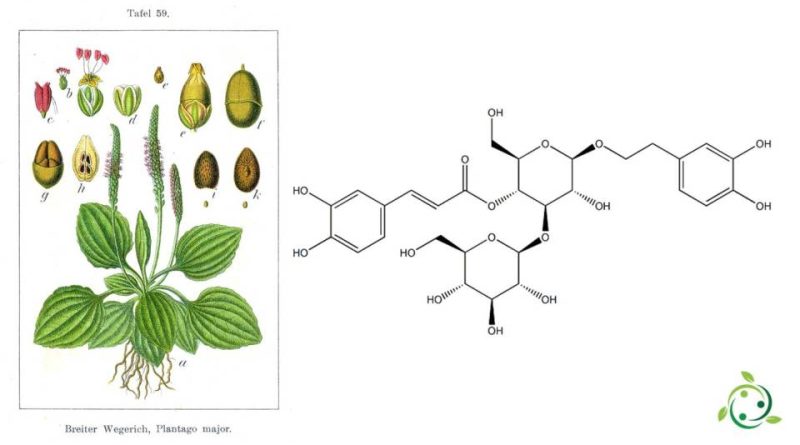Plantamajoside
Plantamajoside
Plantamajoside is a glucoside derived from caffeic acid whose name in the official IUPAC nomenclature is: [(2R, 3R, 4R, 5R, 6R) -6- [2- (3,4-dihydroxyphenyl) ethoxy] -5-hydroxy -2- (hydroxymethyl) -4 – [(2S, 3R, 4S, 5S, 6R) -3,4,5-trihydroxy-6- (hydroxymethyl) oxane-2-yl] oxyoxan-3-yl] (E) -3- (3,4-dihydroxyphenyl) prop-2-enoate.
The plantamajoside has a brute or molecular formula: C29H36O16 and is a substance present in nature in various plants such as the Common Plantain (Plantago major L., 1753).
The plantamajoside is one of the main glycosides of the caffeic acid contained, however, in many genera of the Plantaginaceae family such as: Plantago, Digitalis, Hemiphragma, Lagotis, Picrorhiza, Rehmannia, Veronica, etc.
It is also present in the genera Aeschynanthus and Chirita of the Gesneriaceae family and in the Boschniakia genus of the Orobanchaceae family.
Plantamajoside is present in higher concentrations in the roots of young plants, but is also found in seeds, flower stems, stems, leaves, plant cells grown in vivo and in transgenic root cultures.
Plantamajoside is a substance used as a biomarker in chemotaxonomic studies, and is a compound with numerous biological applications and a remarkable pharmacological potential.
It is a protective agent against ultraviolet light in plants and acts as an antioxidant agent with very low toxicity.
Furthermore, plantamajoside can also be synthesized industrially.
Warning: The information shown is not medical advice and may not be accurate. The contents are for illustrative purposes only and do not replace medical advice.

